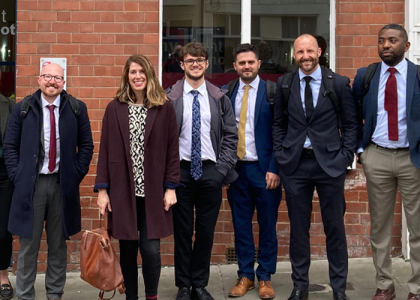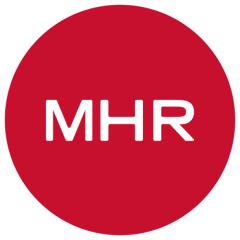Let's talk about digital accessibility

As UK Disability History Month (16 November – 16 December) draws to an end and achieving equality continues to be a central theme, we have reflected on the inclusivity of our products, our organisation, and how truly accessible we are at MHR.
According to the World Health Organisation (WHO), more than one billion people have one or more accessibility needs. Accessibility for all should no longer be a ‘nice to have’, but a ‘must have’ digitally and physically across all products, services, and workplaces.
In recent years, many companies have dived into the challenge to improve diversity and inclusion. Thankfully, with this being a priority, we are now experiencing safer, more welcoming accessible workplaces. Research suggests high levels of employee diversity can see companies outperforming their peers and competitors. It’s evident, therefore that a focus on equity delivers healthy outcomes for both people and businesses.
Businesses who invest in and develop an enriched employee experience have higher retention rates, which can help to tackle current challenges such as The Great Resignation. However, when was the last time some businesses considered how accessible their products or services were? Can we really say we are creating equity for people if we confine our efforts internally only?
What is accessibility?
Accessibility, in this context, means that people with a disability aren’t restricted from acting and behaving in a similar way to those without a disability.
At MHR accessibility is about having an overall inclusive approach. Internally, we continue to improve our building and install equipment to ensure all employees have suitable means to work. From this base, we strive to advance accessibility in the development of our products, thus continuing to create an accessible and fair environment for all.
My Sight Nottingham
Over the last two years, MHR has built a strong relationship with My Sight Nottingham, a charity supporting individuals with vision loss. This has provided our User Experience (UX) team with the opportunity to truly understand how those who are visually impaired use technology, and how we can adapt our products to combat the daily challenges they face.
Through testing initial ideas and concepts within the product development lifecycle, the UX team can determine whether they are feasible to progress. This enhances the accessibility of iTrent and People First, and ultimately ensures every customer using the products can maximise each feature to its full potential.
Although the willingness of many companies to work with disability groups at these crucial, early stages is encouraging, more still needs to be done. People should be at the heart of every organisation. With people being one of our three company pillars at MHR, we are committed to researching and understanding accessibility requirements. We have invested approximately over 900 hours of developing time, purely on People First accessibility over the last 15 months alone.
What have we learnt?
The learning gained from our relationship with My Sight Nottingham not only enhanced our product development lifecycle but also enriched our working culture, raising more awareness around inclusivity.
Isn't it about time all organisations and businesses worked to achieve equality of accessibility in workplaces and for their products and services?
Being accessible is not only a ‘good’ thing to do, but also the ‘right’ thing to do. In the twenty-first century, it should be expected of everyone. If businesses want to expand their customer reach, build stronger strategies, create genuinely diverse workplaces, and comply with current legislation, then being truly accessible must be high on the agenda.



